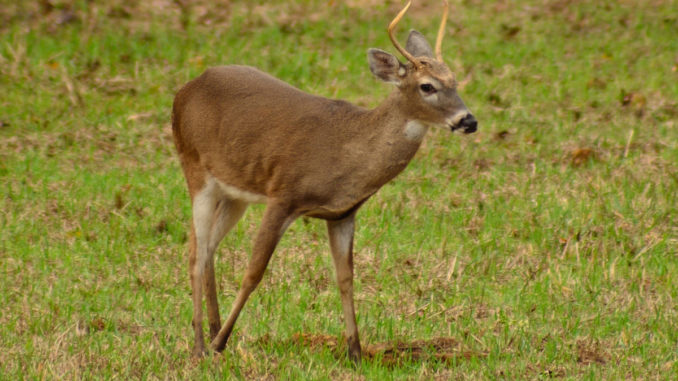
Pay attention to changes in fall food sources
For deer hunters rooted in the Carolinas, November is a demanding and sometimes challenging month in the deer woods. From intense rutting behavior and food availability to drastic changes in the weather, the pressure is on the deer herd. Hunters and land managers must stay on their toes to keep their property attractive when the pressure surges.
Undoubtedly, November is when the majority of hunters target trophies and deer processors begin working overtime to convert whitetails into steaks, chops, and tasty rope sausage.
Hunting pressure increases this month, and deer definitely feel the strain right at the peak of their breeding activity. In fact, the peak rutting activity will occur sometime during November in every county in North Carolina and South Carolina. As hormones surge, bucks make it their life’s mission to breed as many does as they can. Where they go on their doe hunts has little to do with where they spent the period leading up to the rut.
A whitetail buck’s urge to breed during the rut will quickly overpower natural feeding instincts. That’s not to say bucks won’t eat during the rutting period, but they won’t seek out rich food sources this time of year like does will. Again, they just are seeking out female mates, and typically, these does are holding tight to rich food sources.
Throughout the late summer and early fall, deer feed heavily on tender crops from agriculture fields and the temporary soft mast scattered all over the woodlands. But fall conditions bring major changes to staple wildlife foods. The rich summer foliage and sweet berries are quickly replaced by dry, brown matter that lacks any taste or nutritional value. These food sources are changing very quickly and diminishing by the day. By November, most summer agriculture crops have been harvested and cultivated. Deer will quickly shift over to hard mast, woody browse and any other available food. For hunters with substantial acreage in thick, lush, cool- season food plots covered in brassicas, oats and winter peas, November should be very promising. Does will flock this month to food plots, dragging every horny buck in the county with them.
When grown successfully and with an adequate acreage to support a large population of deer, cool-season food plots will become Grand Central Station. Hunters should take advantage of the fruits of their labor and harvest a few deer. Unfortunately, the dream of thick, lush food plots doesn’t always become a reality, even after spending many hours and plenty of dollars. Another folly is that plots may have been planted too small, and deer quickly over-browse to the point that they lose interest in the site.
Either way, natural foods, agriculture fields and some food plots are thinning out, and the weather is turning cold. Deer must find a staple food source even if it means abandoning their local circles for a productive food source down the road. For hunters to keep the herd interested in their acreage and keep big bucks hanging around, adequate food sources must be maintained. Additionally, a rich food source will also attract deer from adjoining properties where food is substandard.
Basically, there are two methods to provide an instant food source for deer. The quickest and most fail-proof method is supplemental feeding. Deer respond well to corn, sweet potatoes, soybeans, peanuts and other tasty food materials dumped on the ground or distributed by commercial or homemade contraptions. Hunters can be very successful around supplemental feeding stations when the weather cools. These areas must be maintained to keep deer fat and happy when natural foods are vanishing.
However, hunting over supplemental feed is not allowed everywhere, and hunters must utilize a different method to keep their deer on the farm.
The second method is a late-season planting of winter wheat, oats or winter rye. These plantings are semi-tolerant of cold weather and will grow late in the year. Even though the air temperatures are becoming very chilly at night, the soil temperature will remain adequate for successful germination. Shoots will erupt from the soil within a few days after planting, providing deer with a quick source of nutrition. Deer will respond very well to a new crop of tender green shoots. These plantings can provide deer with a healthy and very palatable food source throughout the winter.
In areas where landowners don’t allow hunters to establish food plots but several idle agriculture fields are nearby, hunters should coordinate with local farmers to plant a crop of winter food even if it is just a strip along the margin of the fields.




Be the first to comment